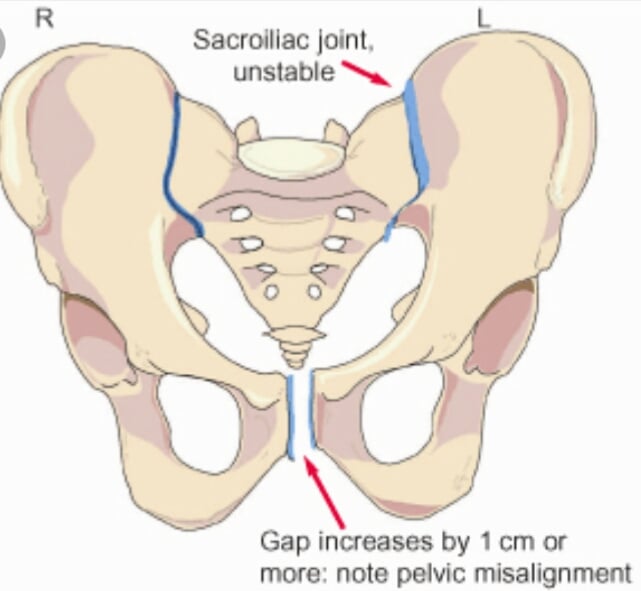Massage for Symphysis Pubis Dysfunction

• Affects 60% of first pregnancies
• Affects 81% of second pregnancies The cartilage which separates the left and right sides of the pelvic bone is called the symphysis pubis. In some cases the relaxin hormone is released from around 20 weeks of pregnancy, causing the ligaments and cartilage to relax and this can cause feelings of instability in the hips and pain in the groin and hips on movements such as walking, standing for longer periods, climbing stairs and turning over in bed. There can also be instability in the sacroiliac joints at the back of the pelvis. SPD usually occurs earlier in subsequent pregnancies. However, SPD has been known to occur as early as 12 weeks and continue to be an issue postnatally. It can also occur during labour if in stirrups for a long time. While the pain will generally disappear following the birth, early diagnosis is vital to effective pain management.
CAUSES
Factors which may contribute to SPD include:-
• Previous pelvic issues
• Misaligned pelvis
• Weak abdominal or pelvic floor muscles eg. due to sedentary lifestyle
• Extra weight of the growing baby increases pressure on the pelvis
• High hormone levels prior to pregnancy • Overproduction of hormones during pregnancy/early release of relaxin
• Previous difficult births
• Hyperflexibility
• Over stretched joints prior to pregnancy eg. through gymnastics
SYMPTOMS
• pain around the symphysis pubis or sacroiliac joints
• pain in the hips, groin and lower abdomen
• pain in coccyx, buttocks and inner thighs
• pain can be a bruised sensation, burning sensation, aching or sharp pain
• pain can be mild to severe or intermittent to constant
• pain which worsens with walking, climbing stairs, bending over, turning in bed, getting in and out of a car, anything involving abduction of the leg • clicking/grinding feeling in hips during movement
• a feeling of shuffling to reduce pain during movement • bladder dysfunction
TREATMENT
• Pain control – the relaxed cartilage causes pain in the muscles which attach to the pelvic bone, which have a large supply of nerve endings
• Physiotherapy
• Massage – deep tissue massage around the thighs, groin and hips to ease the tension and pain in the muscles
• Acupuncture - improves circulation of blood to muscles to ease tension and pain
• Stretches and exercise eg. yoga
SELF HELP MEASURES
• rest where possible
• reduce activity if painful
• keep knees together when turning in bed
• try to avoid lifting extra weight
• get in and out of car by swinging both legs in/out together while sitting on seat
• avoid positions where your legs are straddling something

IMPLICATIONS FOR LABOUR
• Vaginal delivery is still possible
• Avoid stirrups where possible
• Giving birth on all fours is ideal position
• Ensure midwife/doctor are aware of SPD to ensure comfort during examinations
HOW MASSAGE HELPS
• reduces pain due to SPD as well as general pregnancy aches
• relieves muscle tension and imbalances
• relieves joint pain
• increases supply of oxygen and nutrients to the tissues
• promotes relaxation
• helps to regulate hormone levels
• increases production of endorphins which are natural pain relievers through stimulation of the skin
• helps to mobilisation and realignment of the pelvis to ease pain and stabilise the pelvis
• postnatally helps to realign the pelvis and correct postural imbalances
